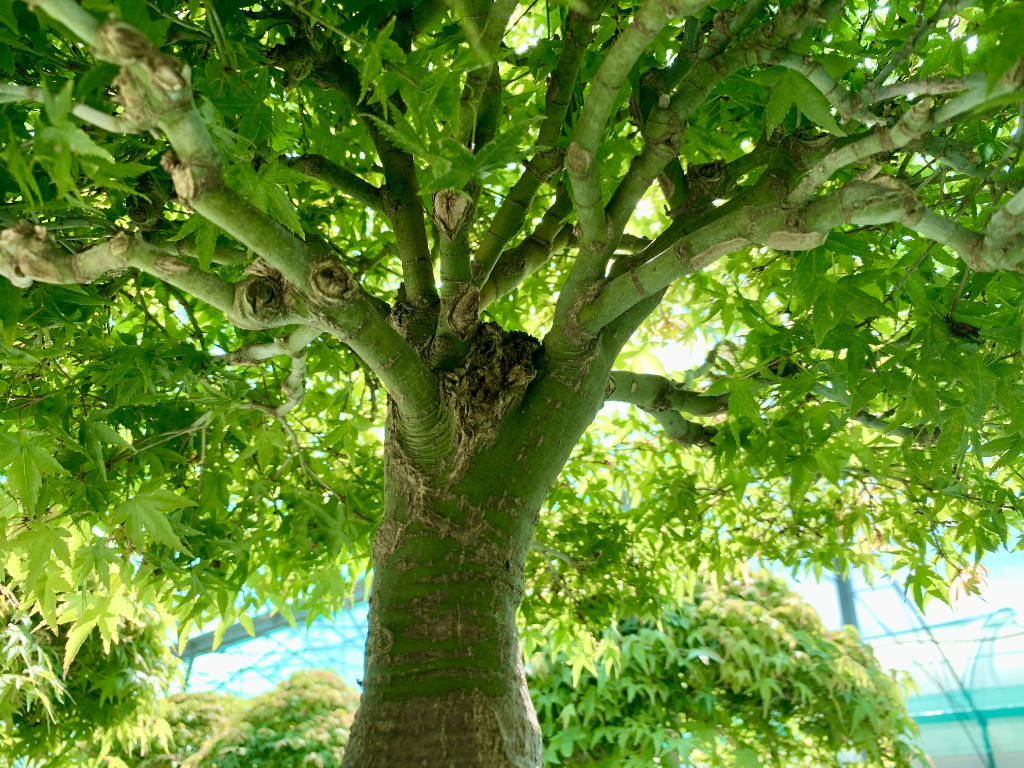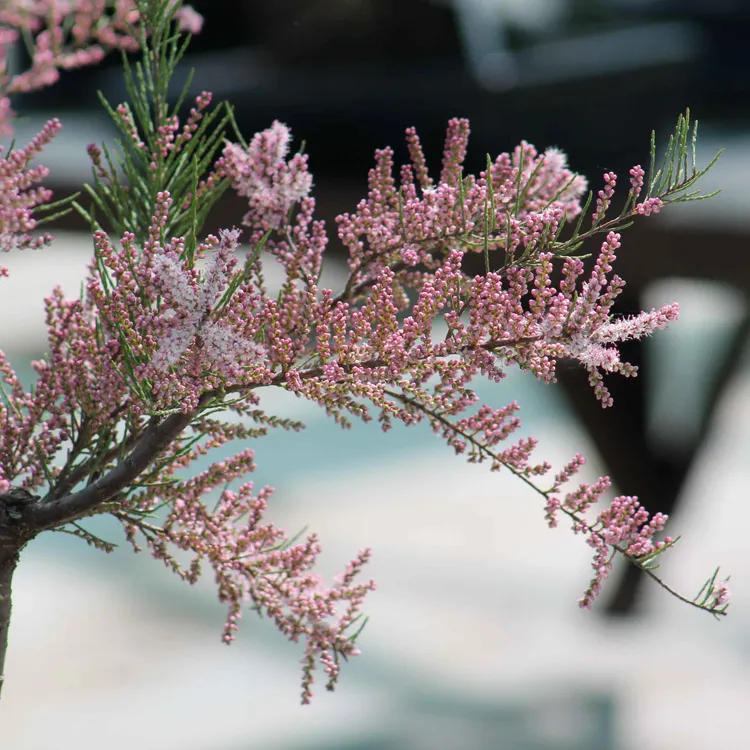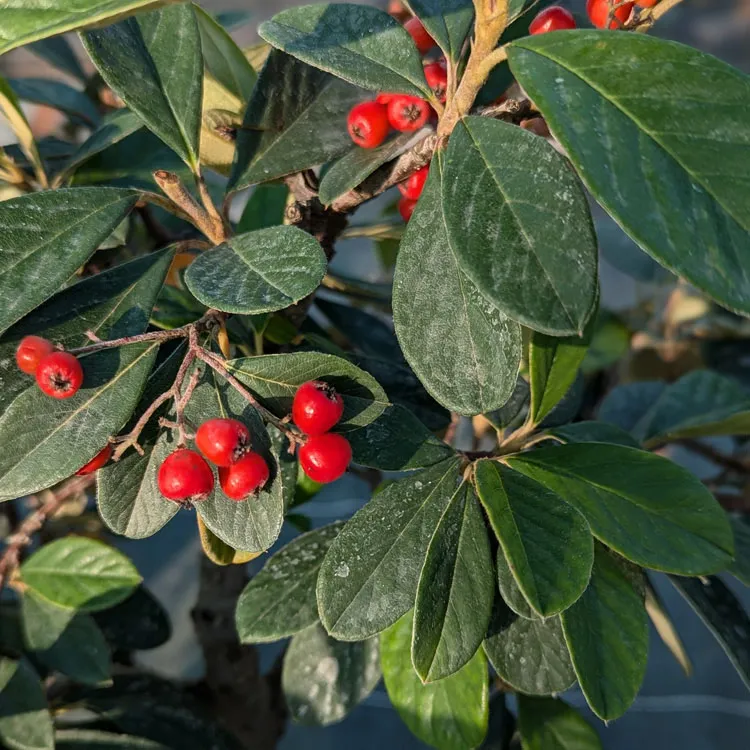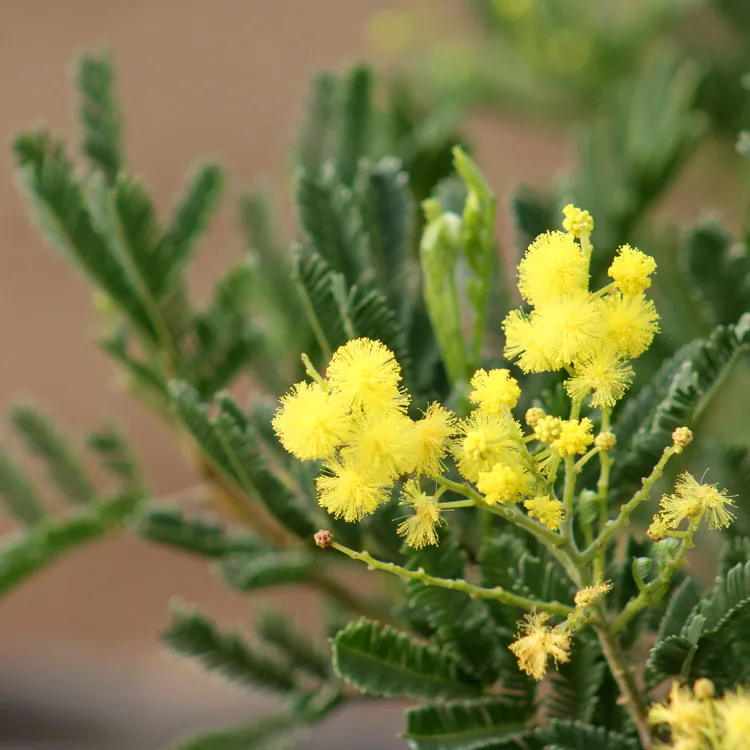The 'Kiyohime' variety is certainly the one we like the most among bonsai maples. Its natural ball-shaped habit and rapid densification make it a very rewarding bonsai for a beginner as it immediately has the appearance of a dwarf tree in its pot.
Its delicate spring foliage marks the restart of vegetation every year. Very quickly, the Kiyohime is covered with leaves.
+ Family: Aceraceae
+ Origin: Japan, Korea, China
+ Foliage: small green leaves with red margins in spring, then green in summer and yellow orange in autumn
» See our selection of 'Kiyohime' maples
One of the few bonsai with a basal tendency
Most trees have an apical tendency, i.e. the head is more vigorous than the lower part. This allows them to quickly climb to the sky in search of light. This is often a matter of survival, because if they stay in the shade of large trees, they will not be able to develop properly.
The Kiyohime maple is a little different, it is the lower branches that are the most vigorous and will grow the fastest. This natural ball-shaped habit is due to the fact that it is a dwarf tree, and in nature it prefers slightly shaded places. When growing it as a bonsai, you have to take into account these characteristics of the variety, and this changes a lot of things when it comes to pruning.
During the first growth in spring you will see that it is the lower branches that elongate the most, while the bud only develops one or two pairs of leaves. To maintain this rounded shape, it is important to shorten the lower branches as soon as they have developed 5 to 7 pairs of leaves.
If you don't do this pruning, the bonsai will become wider and wider year after year. At the risk of even looking like a racket. No, what we like is to see this slightly rounded shape.

Growing Tips
Where to place your Kiyohime maple?
The Palmatum 'Kiyohime' maple lives exclusively outdoors, do not place it indoors or it will gradually die.
+ Location in spring: full sun so that when the first leaves develop they can have maximum light. This will result in progressively smaller leaves with smaller internodes. Year after year, that's how you build a beautiful branch.
+ Location in summer: remember that it is an undergrowth tree, so it will not necessarily appreciate being in full sun, especially during a heat wave. In our bonsai nursery, they tolerate these conditions because we water a lot, and we have chosen to grow in pottery that is a little deeper than what can be seen on display. If the leaves have a burnt appearance to the leaves, it means that the roots have been hot. So ideally we advise to give it an eastern exposure, with sun in the morning and shade in the afternoon. Generally speaking, maple trees don't like hot winds that can roast their leaves, so consider sheltering them from the wind.
+ Location in autumn: as soon as the heat is over, full sun in order to develop beautiful autumn colours. To have beautiful colors in the fall, your Kiyohime maple must have received some sun at the end of summer and a little cold at the beginning of winter. If you protect it too much from the sun, you won't have beautiful colors.
+ Location in winter: If you live in a temperate region, you can leave it outside. As long as temperatures don't drop below -3°C, there is no risk. Just protect it from cold winds. In case of a hard frost, protect the pot by placing it on the ground and mulching, or by placing it in a cold greenhouse. Remember to open the greenhouse as soon as the temperatures rise, so that it doesn't think it's too early in spring!
Watering
Maple trees are species of undergrowth, which like cool soils. Watering in summer should therefore be abundant, especially in hot weather. The rest of the time, water normally, i.e. when the top of the substrate is dry.
Mastering the watering of maple trees is a determining factor in building a beautiful branch. The stem variety tends to make large leaves and develop long internodes when it has plenty of water. Luckily, the Kiyohime strain is easier to manage and naturally makes small leaves, even if you force it a little too hard.
Substrate & Repotting
Avoid soils that drain too much, such as pozzolana or pure pumice, unless you like to water several times a day in hot weather. So incorporate a good amount of organic matter, such as composted pine bark. It will retain moisture in the soil while allowing good drainage.
Repot in the spring, when the first leaves come out. It's better to repot too late than too early. The best time to repot is when the bonsai has started to grow. This is where it will heal the root cuts faster and create new ones. So we avoid repotting in the middle of winter, or even worse in autumn.
Fertilization
As soon as the first shoot is developed, start fertilizing. We give fertilizer every two months, from April until fall. We combine an organic fertilizer with a chemical fertilizer with a low nitrogen content (lower value of N, and higher value of P and K). The nitrogen will promote growth while the other compounds will strengthen your bonsai, and give it beautiful foliage colors.
When to prune a Kiyohime maple?
During the winter, when the leaves have fallen, you can prune the structure and remove unnecessary branches. Turn around your bonsai, examine each branch and prune the intersecting ones, leaving only two tees at each intersection.
During the growing season, shorten the twigs to one pair of leaves with a good pair of scissors.
For more details, see the article how to prune a Japanese barn.
Ligature
Tie maple trees should not be tied, as the wires can leave marks on the wood. In the best case they take years to disappear, in the worst case they will remain for life.
However, if you want to improve the aesthetics, it is possible to slightly change the position of the not too large branches by applying a very loose ligature. Do not tighten or the wire will mark. Be careful to remove the ligature as soon as you see that the wire is starting to tighten the branch (be careful, during the growth period it can go very quickly, so you have to check every day).


 Production of French Bonsai
Production of French Bonsai
























































































